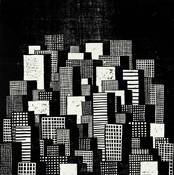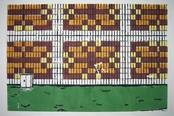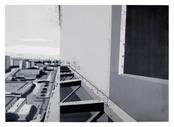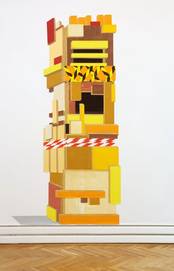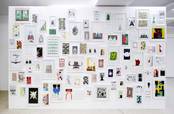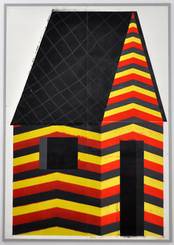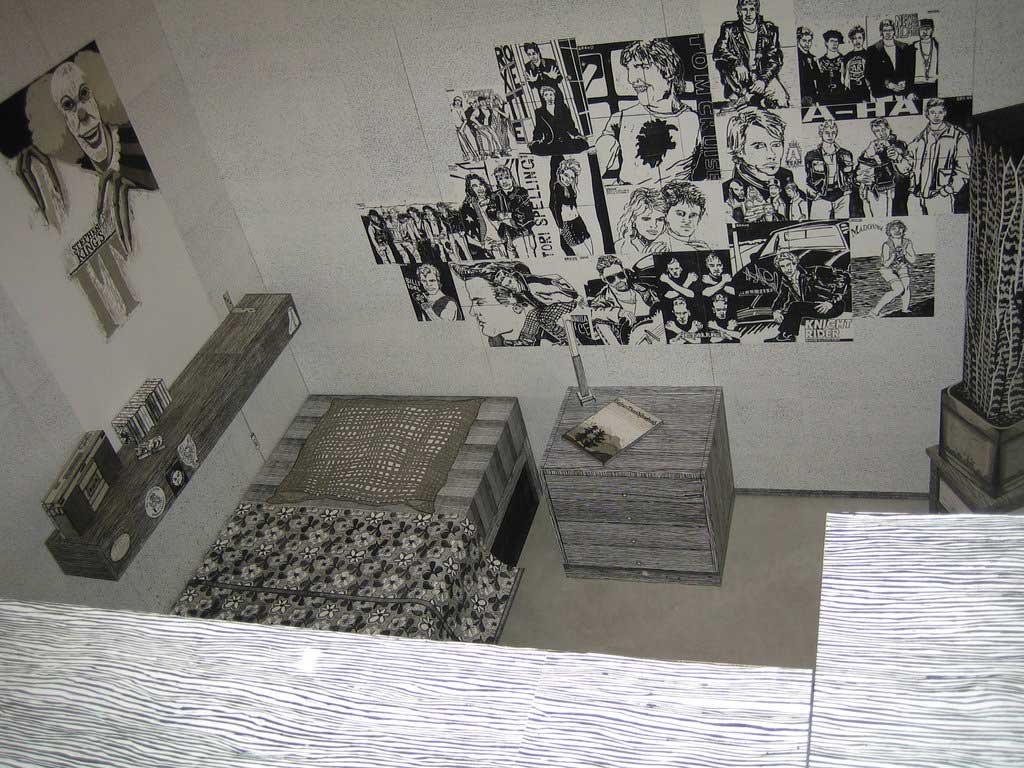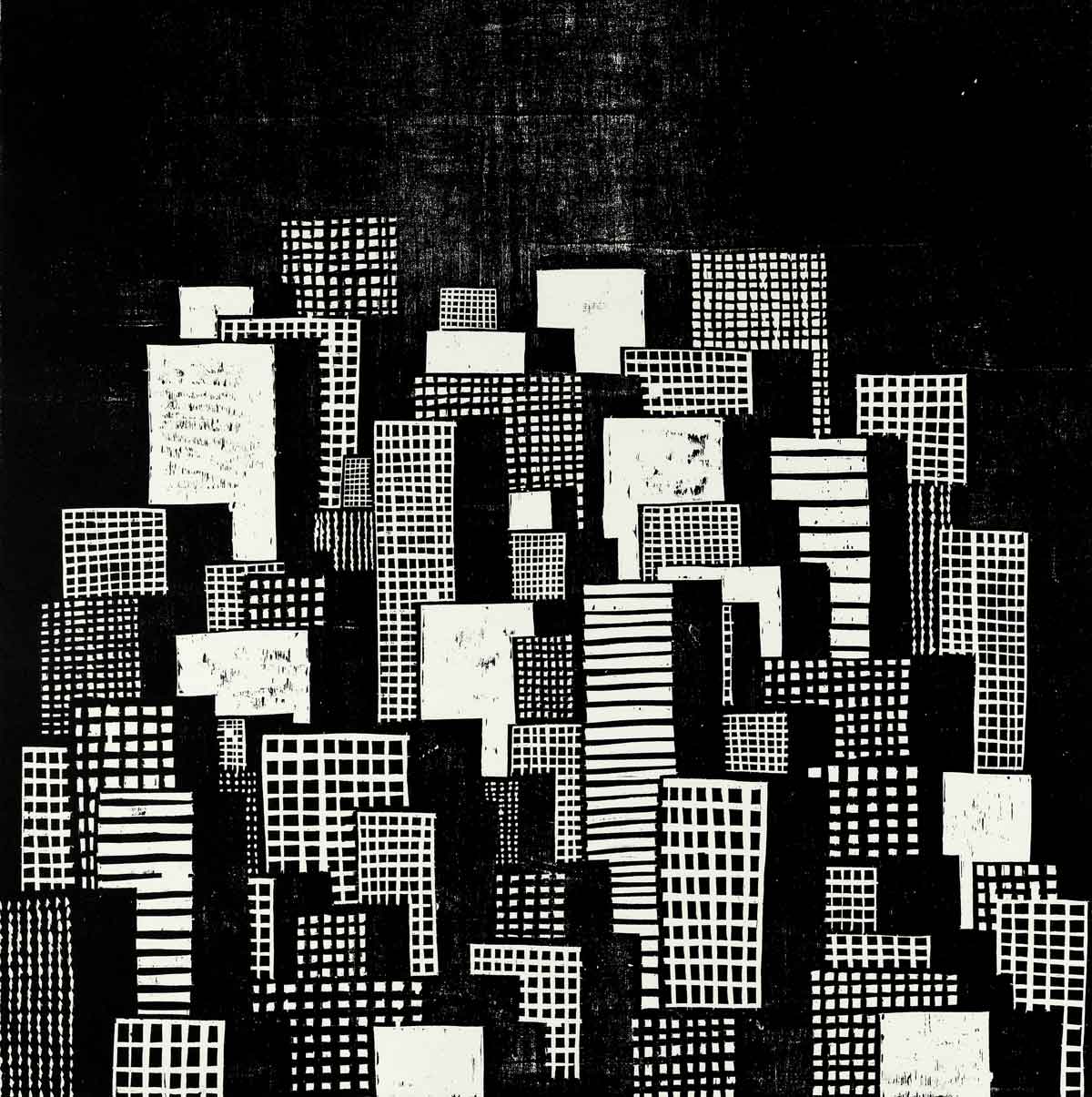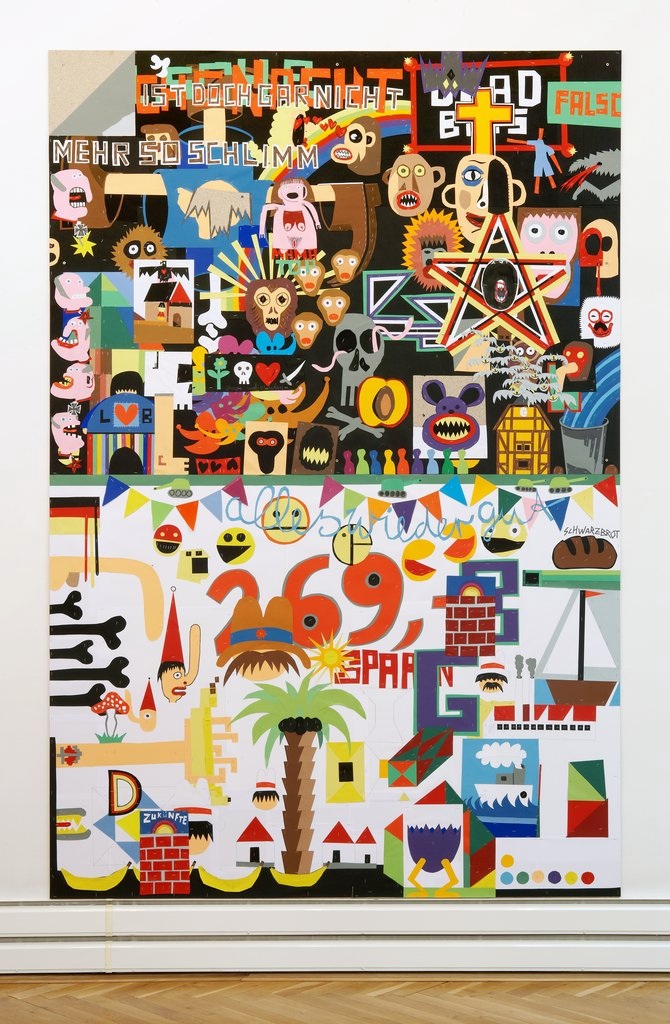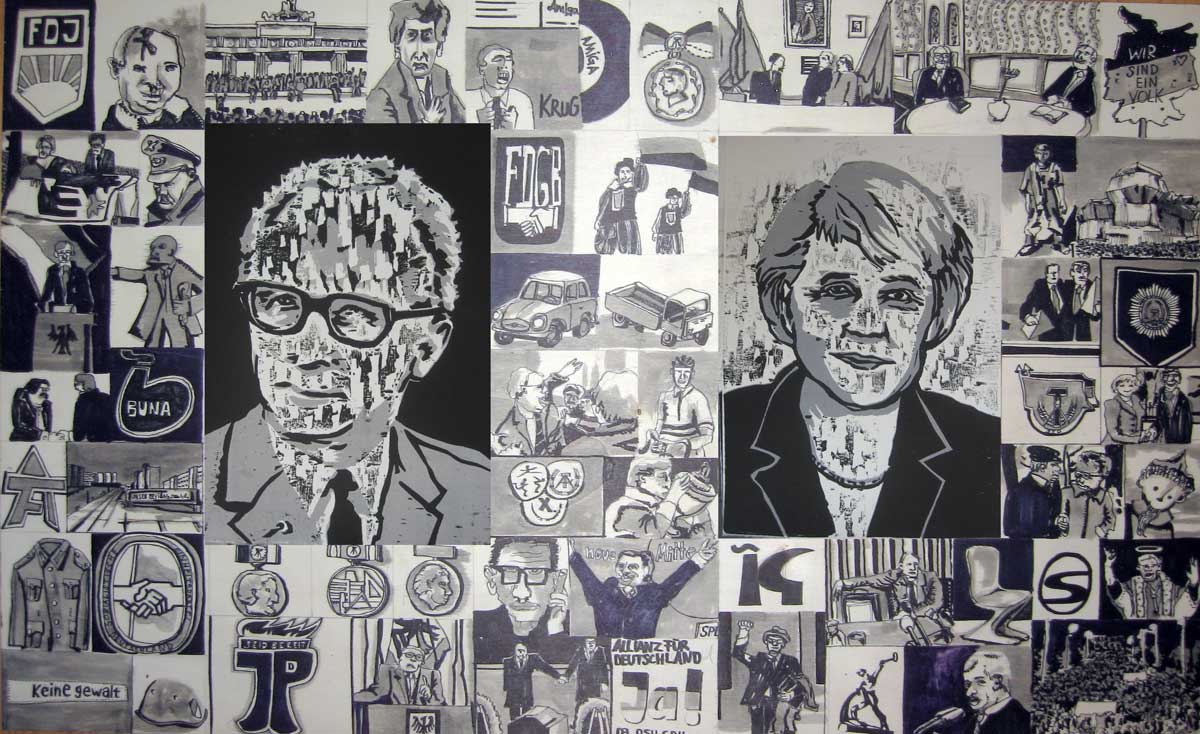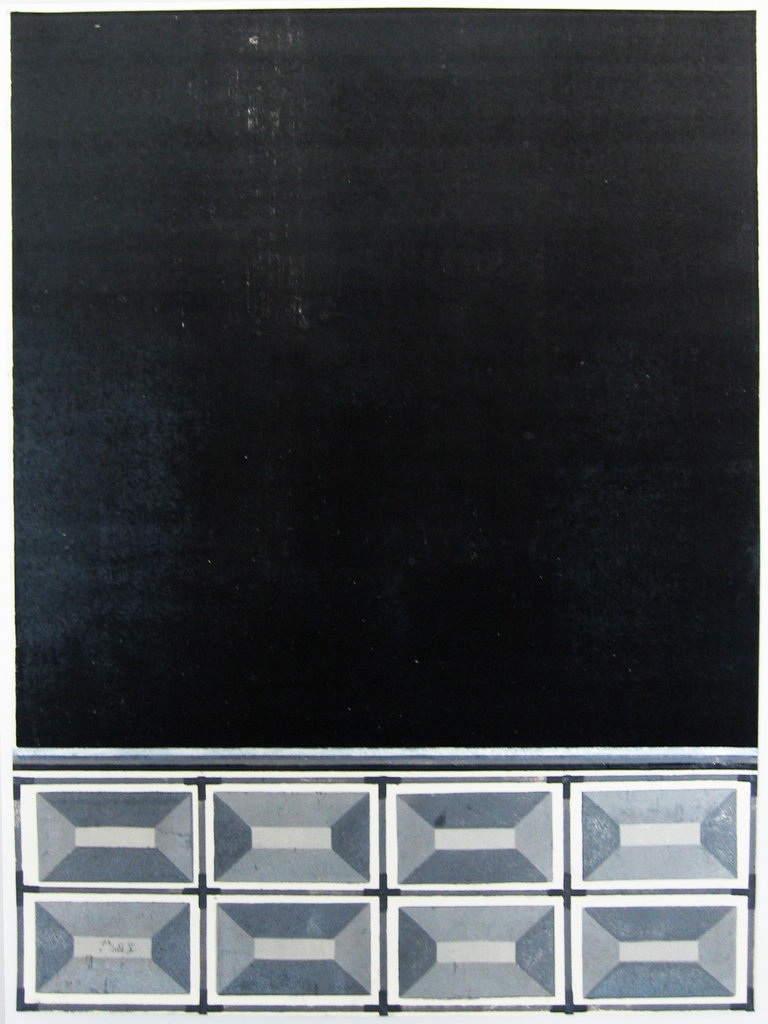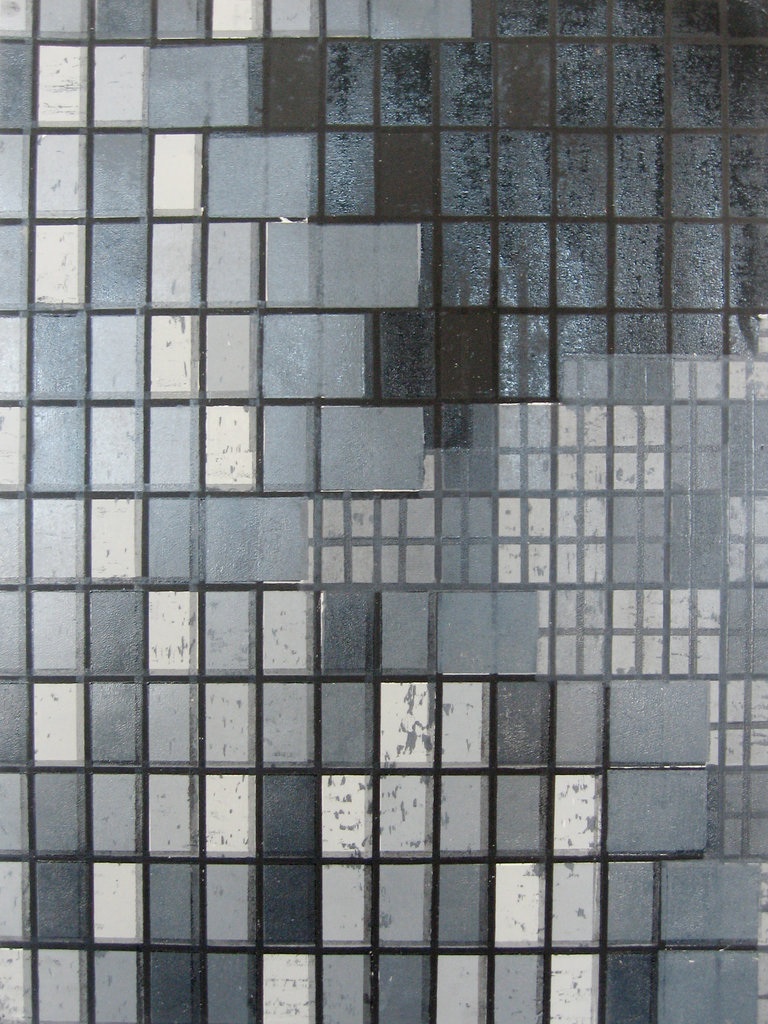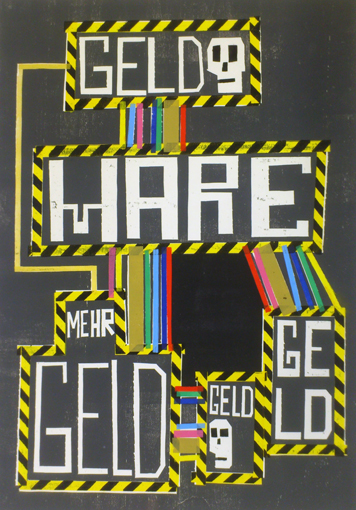Jan Brokof
Only from the perspective of his previous examinations of constructed space can Brokof’s latest work, “Revolutionsarchitektur-Tor” (2012), be understood. While the blocks of houses from his hometown of Schwedt, reconstructed using woodcuts, act as representatives of a past spatial experience (2004-2005), he also abstracts the contours of New York, Paris and Tokyo to create an urbanity of dreamscapes with the simplest of forms in his “Comicstädten” (2007) and employs the block printing of a woodcut to create reliefs of the GDR in décor acceptable to socialist realism (2008).
The three-dimensional “Revolutionsarchitektur-Tor,” in which Brokof has mounted spain boards atop one another and covered them with layers and layers of relief patterns, reveals a central element of his basic spatial concept; here, too, he examines forgotten sediments of architectural history. Revolutionsarchitektur spans a late 18th-century phase in France that often deals only with utopian designs that remained unbuilt. Brokof’s choice of title shows he is more interested in the idea than he is in its actual ability to be realized in terms of mechanics and technology. By working graphically, the gate at first glance appears realistic, but then the observer is only able to circle around it as around a sculpture. Through the woodcut, the dimensions of the work and the lack of an opening for the gate, its apparently two-dimensional nature is unmasked, showing it for what it is. At the same time, the gate is adorned with a mix of styles from the various cultures that have used relief; gray and white façade elements from the GDR are placed alongside a mosaic-like Bauhaus-style frame, which in turn is juxtaposed against the Nazi massiveness of neoclassicist-style pillars as well as a pagoda-like roof from China. It appears as if the artist has brought together the entire historical and geographic mix of architectonic embellishments merely in order to let the observer formally run “against the wall.”
As with social space within the basic three-dimensional spatial concept of French sociologist Henri Lefebvre, Brokof’s works revolve around the formative power of built space that is brought out by architects and planners and structured like the sedimentary deposits of our spatial imaginings. When we deal with space, hence, we invoke thehistory-ensconced sketches and designs of planners and architects. In that pursuit, according to Lefebvre, our imagination is never impartial. Just like an archaeologist, Brokof “elevates” these unconscious spatial pictures in his latest work, using the tools at his disposal to lay bare a relief and some utopian architecture here, a gate there – once again unearthing these sediments of constructions.
Dr. Christine Nippe
Solo exhibitions (selection) | |
2012 | »¥€$«, galerie baer, Dresden »Otto-Dix-Preisträger«, Kunstsammlung Gera »Deutscher Gedenkdruck«, galerie baer, Dresden |
2011 | »Der Westen war einsam«, Folkwang Museum Essen (K) »Concrete Forrest«, Leonhardi-Museum, Dresden (K) |
Participation (selection) | |
2013 | »jetzt hier«, Staatliche Kunstsammlungen Dresden, Dresden »Schaufenster: Zwickau meets Dresden«, Staatliche Kunstsammlungen Dresden, Dresden »Schauplatz Stadt«, Kunstmuseum Mülheim an der Ruhr (K) |
2012 | »Neuerwerbungen Teil 2«, Museum Junge Kunst, Frankfurt (Oder) »knappdanebenistauchvorbei«, Philara, Düsseldorf |
2011 | »galerie module 3«, Keller Hauptstraße 1, Colorado, Dresden »Positionen sächsischer Gegenwartskunst«, Villa Eschenbach, Dresden »Künstlerische Positionen im Hochdruck«, Museum für Druckkunst Leipzig |
Vita | |
1977 | born in Schwedt/Oder, Germany |
1999-2004 | study of painting, graphic arts and other medias at Academy of Fine Arts Dresden, Germany |
2004-2006 | master studies at Academy of Fine Arts Dresden, Germany with Prof. Ralf Kerbach |
2010 | formation of the Artband »Baut« |
seit 2010 | member oft he theatergroup and stage design »and company« |
works and lives in Dresden and Berlin | |
Prizes | |
2012 | Otto-Dix-Prize |
2008 | prize „woodcut today“, Stiftung Kunst, Kultur und Bildung der Kreissparkasse Ludwigsburg, Germany |
2007 | Arras-prize for art and culture in Dresden, Germany |
2006 | Grant by the Free State of Saxony |
2005 | Marion-Ermer-Prize |
2004 | Prize for graphic by Volksbank Chemnitz, Germany Hegenbarth-Fellowship |
Downloads | |
Texts | |
»Jan Brokofs spatial archaelogy of constructed envoironment« · Dr. Christine Nippe · 2012 | |
»(No longer) being part of a youth movement« · Carla Orthen · 2009 | |



